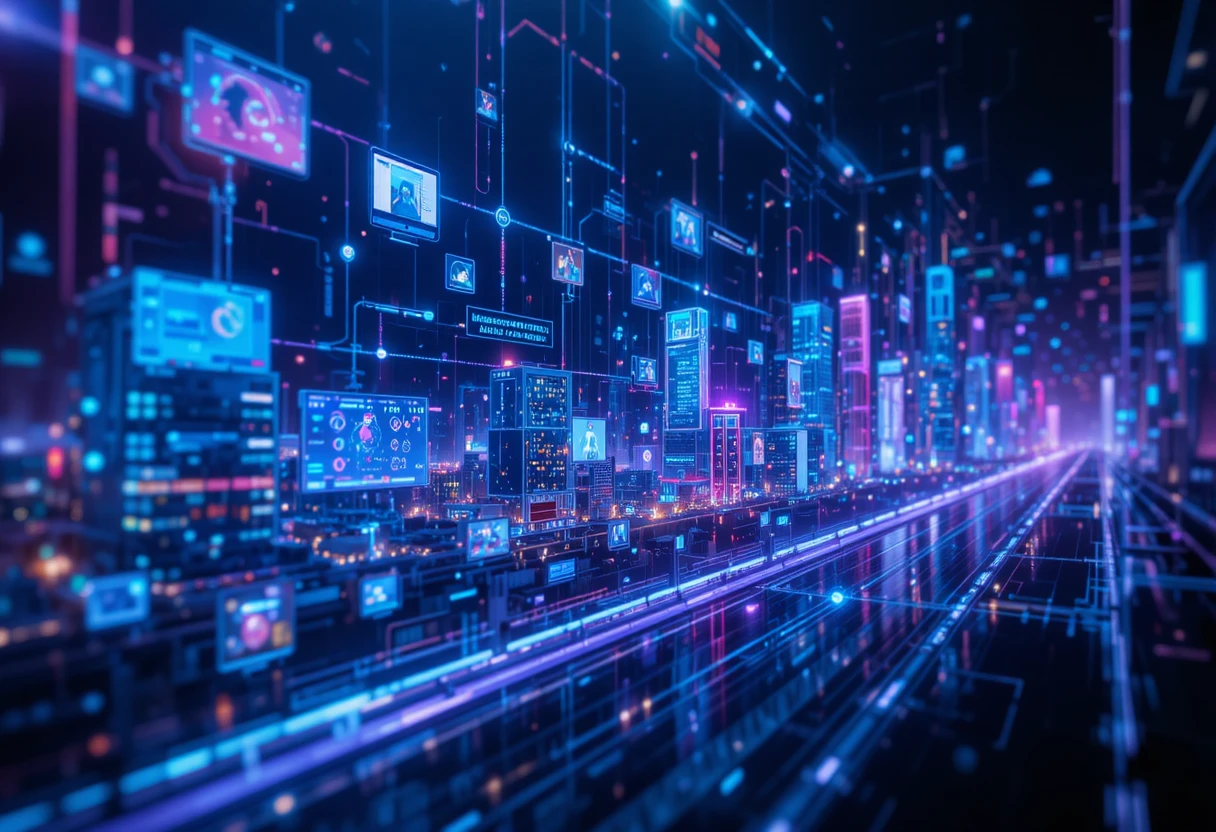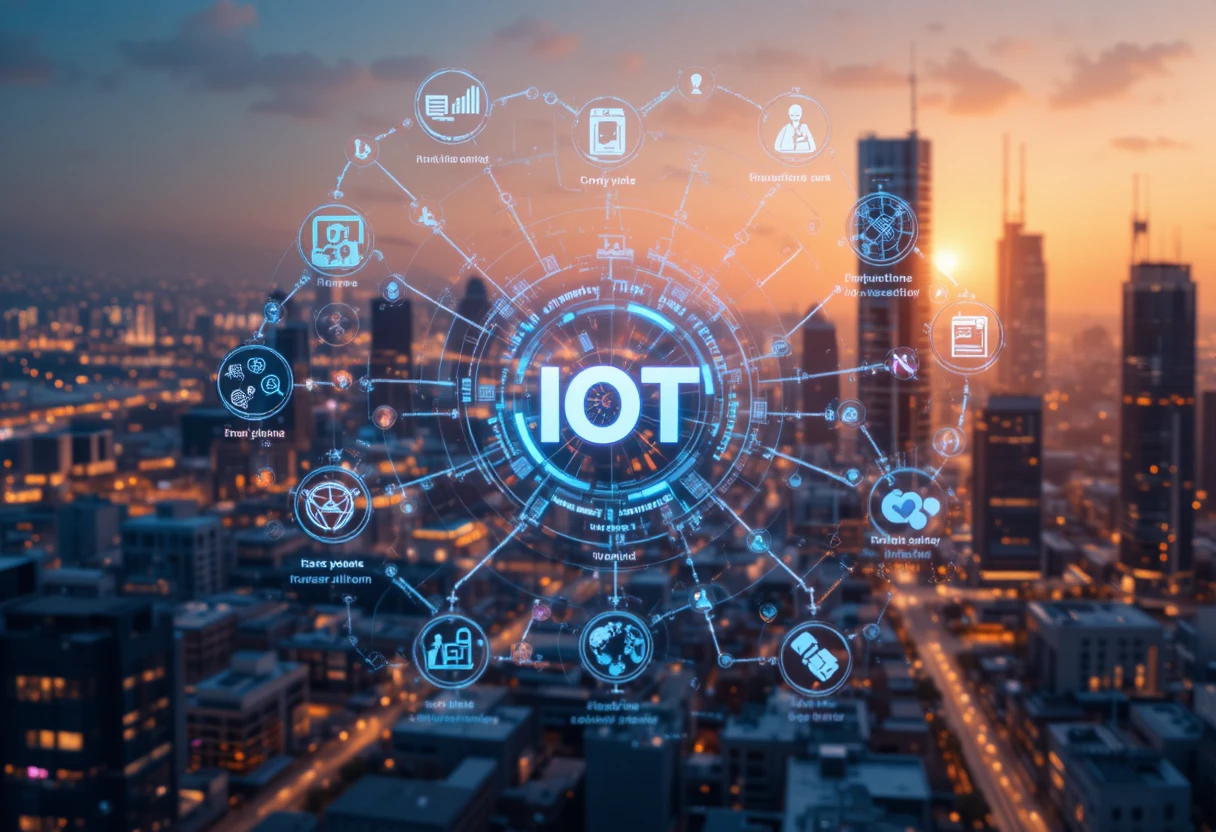The Internet of Things (IoT) is revolutionizing the way we interact with the world, connecting devices, systems, and people in a seamless network of data and intelligence. From smart homes to industrial automation, IoT is transforming industries, enhancing efficiency, and reshaping daily life. This 3000-word article explores the fundamentals, applications, challenges, and future of IoT, offering a comprehensive look at this transformative technology.
What is the Internet of Things?
The Internet of Things refers to the interconnected network of physical devices embedded with sensors, software, and connectivity, enabling them to collect, exchange, and act on data. These devices range from everyday objects like smart thermostats and wearables to complex systems like industrial machinery and autonomous vehicles. IoT creates a digital ecosystem where devices communicate, often via the internet, to automate tasks, optimize processes, and provide actionable insights.
A Brief History of IoT
The concept of IoT emerged in the late 1990s, with the term coined by Kevin Ashton in 1999 during his work on RFID (Radio-Frequency Identification) technology. Early IoT applications focused on supply chain management, using RFID tags to track goods. The 2000s saw advancements in wireless communication, cloud computing, and sensor technology, enabling broader IoT adoption. By the 2010s, consumer IoT devices like smart speakers and fitness trackers gained popularity, while industrial IoT (IIoT) transformed manufacturing and logistics. Today, IoT is a cornerstone of digital transformation, with billions of connected devices worldwide.

How IoT Works: The Building Blocks
IoT systems rely on a combination of hardware, software, and connectivity to function. Understanding these components is key to grasping IoT’s potential.
Devices and Sensors
IoT devices are equipped with sensors to collect data, such as temperature, motion, or location. For example, a smart thermostat monitors room temperature, while a wearable tracks heart rate. These devices range from simple sensors to complex machines like connected cars.
Connectivity
Connectivity is the backbone of IoT, enabling devices to communicate. Technologies like Wi-Fi, Bluetooth, Zigbee, 5G, and LoRaWAN facilitate data transfer. The choice of connectivity depends on factors like range, power consumption, and data volume. For instance, 5G supports high-speed, low-latency communication for autonomous vehicles.
Data Processing and Analytics
IoT generates massive amounts of data, processed either locally (edge computing) or in the cloud. Edge computing analyzes data on the device itself, reducing latency, while cloud platforms like AWS IoT or Microsoft Azure IoT enable large-scale analytics. Machine learning enhances IoT by identifying patterns and predicting outcomes.
User Interfaces
IoT systems often include user interfaces, such as mobile apps or dashboards, allowing users to monitor and control devices. For example, a smart home app lets users adjust lighting or check security cameras remotely.
Types of IoT
IoT encompasses various domains, each with unique applications and characteristics.
Consumer IoT
Consumer IoT includes devices for personal use, such as smart speakers (e.g., Amazon Echo), wearables (e.g., Fitbit), and smart appliances. These devices enhance convenience, health, and entertainment. For instance, smart thermostats like Nest optimize energy use, while wearables track fitness metrics.
Industrial IoT (IIoT)
Industrial IoT focuses on applications in manufacturing, logistics, and energy. IIoT enables predictive maintenance, supply chain optimization, and real-time monitoring. For example, sensors on factory equipment predict failures, reducing downtime and costs.
Smart Cities
Smart cities leverage IoT to improve urban living. Applications include traffic management, smart lighting, and waste management. For instance, IoT-enabled traffic lights reduce congestion by adapting to real-time traffic patterns.
Healthcare IoT
IoT in healthcare, or the Internet of Medical Things (IoMT), includes devices like remote patient monitors and smart implants. These technologies improve patient outcomes by enabling real-time health tracking and diagnostics.
Applications of IoT Across Industries
IoT’s versatility drives innovation across sectors, enhancing efficiency and creating new opportunities.
Smart Homes
Smart home devices, such as connected lights, thermostats, and security systems, offer convenience and energy savings. For example, Philips Hue smart bulbs adjust lighting based on user preferences, while Ring doorbells provide remote security monitoring. IoT integration allows devices to work together, creating a cohesive smart home ecosystem.
Healthcare
IoT transforms healthcare through remote monitoring, telemedicine, and smart medical devices. Wearables track vital signs, alerting doctors to anomalies. IoMT devices, like insulin pumps, deliver precise treatments. IoT also streamlines hospital operations, such as inventory management for medical supplies.
Manufacturing
In manufacturing, IIoT enables smart factories with real-time monitoring and automation. Sensors track equipment performance, predicting maintenance needs to prevent breakdowns. IoT also optimizes supply chains by tracking goods and predicting demand.
Transportation and Logistics
IoT enhances transportation through fleet management, autonomous vehicles, and smart logistics. GPS-enabled IoT devices track vehicles, optimizing routes and reducing fuel consumption. In logistics, IoT monitors goods’ conditions, ensuring quality during transit.
Agriculture
IoT-driven smart agriculture improves crop yields and resource efficiency. Sensors monitor soil moisture, weather, and crop health, enabling precision farming. Drones equipped with IoT sensors map fields and apply fertilizers, reducing waste.
Retail
In retail, IoT enhances customer experiences and operations. Smart shelves track inventory in real-time, reducing stockouts. IoT-enabled beacons deliver personalized offers to shoppers’ smartphones. Retailers also use IoT data to analyze consumer behavior and optimize store layouts.
Energy
IoT optimizes energy management through smart grids and connected devices. Smart meters monitor electricity usage, helping consumers reduce costs. IoT also supports renewable energy by optimizing solar and wind power generation.

Benefits of IoT
IoT offers numerous advantages, driving its widespread adoption.
Efficiency and Automation
IoT automates repetitive tasks, reducing manual effort. For example, smart irrigation systems water crops based on soil data, saving time and resources. In industries, IoT streamlines processes, boosting productivity.
Data-Driven Insights
IoT generates actionable insights from real-time data. Businesses use these insights to optimize operations, predict trends, and make informed decisions. For instance, retailers analyze IoT data to forecast demand.
Cost Savings
IoT reduces costs through predictive maintenance, energy optimization, and efficient resource use. Smart thermostats lower energy bills, while IIoT minimizes equipment downtime.
Enhanced User Experience
IoT improves convenience and personalization. Smart home devices adapt to user preferences, while IoT wearables provide tailored health insights.
Challenges in IoT
Despite its potential, IoT faces significant challenges that must be addressed for sustainable growth.
Security and Privacy
IoT devices are vulnerable to cyberattacks, as many lack robust security features. High-profile breaches, like the 2016 Mirai botnet attack, highlight these risks. Ensuring end-to-end encryption and secure protocols is critical. Privacy concerns also arise, as IoT devices collect sensitive data, requiring compliance with regulations like GDPR.
Interoperability
With billions of IoT devices from different manufacturers, interoperability is a challenge. Lack of universal standards can hinder device communication. Initiatives like Matter, a smart home connectivity standard, aim to address this.
Scalability
Scaling IoT systems to handle millions of devices requires robust infrastructure. Network congestion and data overload can degrade performance. Edge computing and 5G are helping overcome these limitations.
Data Management
IoT generates vast amounts of data, posing storage and processing challenges. Efficient data management systems, including cloud and edge solutions, are essential to handle this volume.
Power Consumption
Many IoT devices rely on batteries, and frequent recharging or replacement is impractical. Low-power protocols like LoRaWAN and energy-efficient designs are critical for sustainability.
Ethical Considerations
IoT raises ethical questions that demand careful consideration to ensure responsible use.
Privacy Concerns
IoT devices collect personal data, raising privacy risks. For example, smart speakers may record conversations, and wearables track health metrics. Transparent data policies and user consent are essential to protect privacy.
Security Risks
Unsecured IoT devices can be exploited, compromising user safety. For instance, hacked smart cameras could expose private spaces. Manufacturers must prioritize security in device design.
Digital Divide
IoT adoption is uneven, with affluent regions benefiting more than underserved areas. Bridging the digital divide requires affordable devices and accessible infrastructure.
Environmental Impact
The proliferation of IoT devices raises concerns about e-waste. Sustainable manufacturing and recycling programs are needed to minimize environmental harm.

The Future of IoT
The future of IoT is poised for exponential growth, driven by technological advancements and societal needs.
5G and Connectivity
5G’s high speed and low latency will unlock new IoT applications, from autonomous vehicles to real-time industrial automation. Enhanced connectivity will support denser device networks, enabling smart cities and beyond.
Edge Computing
Edge computing will dominate IoT, processing data closer to devices to reduce latency and bandwidth usage. This is critical for real-time applications like autonomous driving and smart grids.
AI and IoT Integration
Combining IoT with AI enhances data analysis and decision-making. AI-powered IoT systems predict equipment failures, optimize energy use, and personalize user experiences. For example, AI-driven smart homes anticipate user needs based on behavior patterns.
Smart Cities and Sustainability
IoT will drive smart city initiatives, improving urban efficiency and sustainability. Smart waste management, traffic optimization, and renewable energy integration will address environmental challenges.
IoT in Healthcare
IoMT will expand, with wearable devices and remote monitors enabling proactive healthcare. AI-powered IoT will predict health risks, improving patient outcomes and reducing costs.
Security Advancements
As IoT grows, security will be a priority. Blockchain-based IoT networks and advanced encryption will protect devices and data. Standardization efforts will also enhance interoperability.
Conclusion
The Internet of Things is a transformative force, connecting devices, people, and systems in a smart, data-driven ecosystem. From smart homes to industrial automation, IoT enhances efficiency, provides insights, and improves quality of life. However, challenges like security, interoperability, and ethical concerns must be addressed to ensure sustainable growth. As technologies like 5G, AI, and edge computing advance, IoT’s potential will continue to expand, shaping a connected and intelligent future. Collaboration between technologists, policymakers, and society is essential to harness IoT’s benefits responsibly.
